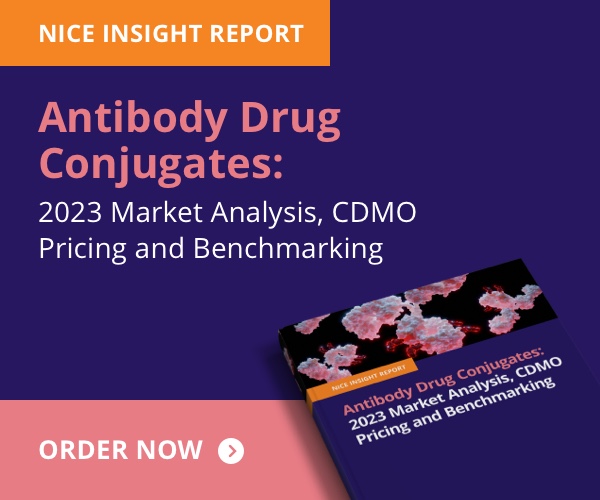Median survival of top 100 patients is 40.5 months, Median survival of all 331 patients is 23.1 months, Longest survivors have exceeded 7 years
BETHESDA, Md., May 29, 2018 /PRNewswire-USNewswire/ -- Northwest Biotherapeutics (OTCQB: NWBO) -- ("NW Bio"), a biotechnology company developing DCVax® personalized immune therapies for solid tumor cancers, announced today the publication of interim blinded survival data from its Phase 3 clinical trial of DCVax®-L for newly diagnosed Glioblastoma brain cancer. The data were collected by the independent contract research organization managing the trial, tabulated by an independent statistical firm and published with 69 co-authors in the peer reviewed Journal of Translational Medicine (JTM).
Due to the crossover design, nearly 90% of the total 331 patients in the trial have received DCVax-L treatment. For the total 331 patients (both arms of the trial combined) the median survival as of this analysis was 23.1 months from surgery. With the standard of care (SOC) today (surgery, radiation and chemotherapy), median survival for newly diagnosed Glioblastoma is 15-17 months.
For patients with methylated MGMT gene status (131 patients), median survival was 34.7 months from surgery. With standard of care today, median survival for these patients has been reported in the literature as 21.7 months. For patients with unmethylated MGMT gene status (162 patients), the median survival was 19.8 months from surgery. With standard of care today, the median survival for these patients has been reported in the literature as 12.7 months. (MGMT data was not available for 38 patients.)
The top 100 patients (30%) of the total 331 patients in the trial showed particularly extended survival, with median survival of 40.5 months from surgery. This extended survival was not fully explained by known prognostic factors such as age younger than 50 years, methylated MGMT gene status and complete resection (surgical removal) of all of the tumor. Only 8% of these 100 patients had the favorable status on all 3 of these prognostic factors.
With immune therapies, the "long tail" of the survival curve is of particular importance and focus. In this DCVax-L trial, patients who survive past certain time points, have continued onwards to substantially extended survival. The patients are continuing to move through time points based upon when they had their surgery, and only some of the patients had reached certain time points in this trial as of this analysis. For example, 223 patients were ≥30 months past their surgery date as of this analysis; 67 of these (30.0%) have lived ≥30 months and these patients have Kaplan-Meier (KM)-derived median survival estimate of 46.5 months. Also as of this analysis, 182 patients were ≥36 months past their surgery date; 44 of these (24.2%) have lived ≥36 months and these patients have KM-derived median survival estimate of 88.2 months.
The administration of DCVax-L involves only an intra-dermal injection in the arm, similar to a flu shot, 3 times in the first month of treatment, 3 additional times over the rest of the first year (at months 2, 4 and 8), and twice a year thereafter. It thereby involves only a minimal burden on the patient.
DCVax-L has shown an excellent safety profile in the trial. The DCVax-L product has been administered well over 2,000 times, and only 7 of the 331 patients (2.1%) have experienced a serious adverse event that was deemed at least possibly related to the treatment. The rate of total adverse events (including non-serious events) was comparable to the rate of adverse events with standard of care alone.
"These are just interim data, and the data may get either better or worse as they continue to mature" commented Linda Powers, the Company's CEO. "However, the survival times we are seeing are encouraging, especially in light of how little progress has been made in decades in treatments for Glioblastoma."
"We have noted a growing recognition in the immuno-oncology field of the exceptional heterogeneity and complexity of Glioblastoma, and the need for treatments to target multiple antigens on these tumors" Ms. Powers continued. "DCVax-L is designed to use Nature's system to mobilize an anti-tumor immune response, targeting the full set of antigens on a patient's tumor and doing so in a fully personalized way. We believe this approach is key to the clinical results we are seeing."
"The safety profile of DCVax-L is also quite encouraging, with almost no serious adverse events related to the treatment, no necessity for additional drugs to manage side effects and no hospital in-patient stays as are often required with certain other kinds of immune cell therapies" Ms. Powers noted. "This safety profile is quite important to patients, and we believe it can also facilitate combining DCVax-L with a variety of other types of treatments."
The reported data are from the most recent prior full data collection in 2017. The Company is undertaking another full data collection, which is a multi-month process and will be continuing over the coming months.
The publication can be found on the JTM website at https://doi.org/10.1186/s12967-018-1507-6 .
Disclaimer
Statements made in this news release that are not historical facts, including statements concerning future treatment of patients using DCVax and future clinical trials, are forward-looking statements within the meaning of the Private Securities Litigation Reform Act of 1995. Words such as "expect," "believe," "intend," "design," "plan," "continue," "may," "will," "anticipate," and similar expressions are intended to identify forward-looking statements, although not all forward-looking statements contain these identifying words. We cannot guarantee that we actually will achieve the plans, intentions or expectations disclosed in our forward-looking statements and you should not place undue reliance on our forward-looking statements. Actual results may differ materially from those projected in any forward-looking statement. Specifically, there are a number of important factors that could cause actual results to differ materially from those anticipated, such as risks related to the Company's ability to conduct ongoing patient follow-up and complete the trials on a timely basis, uncertainties about the clinical trials process, uncertainties about the timely performance of third parties, risks related to whether the Company's products will demonstrate safety and efficacy, risks related to the Company's ongoing ability to raise additional capital, and other risks included in the Company's Securities and Exchange Commission ("SEC") filings. Additional information on the foregoing risk factors and other factors, including Risk Factors, which could affect the Company's results, is included in its SEC filings. Finally, there may be other factors not mentioned above or included in the Company's SEC filings that may cause actual results to differ materially from those projected in any forward-looking statement. The Company assumes no obligation to update any forward-looking statements as a result of new information, future events or developments, except as required by securities laws.




